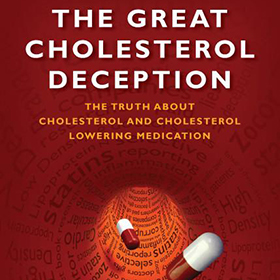
Since the advent of cholesterol lowering drugs cholesterol has become “public enemy number one” and has taken nearly all the blame for the increase in CVD. Unfortunately this has led to a lot of misinformation and misdirection in treating the real illness of CVD and its causes.
The current ideology is far from the truth and can be dangerous—particularly since the overwhelming current evidence points to CVD as a result of poor lifestyle and dietary choices that lead to inflammation. In reality, CVD is now recognized as a disease of low-grade chronic inflammation of the vascular lining and an inappropriate wound healing of blood vessels. There is now extensive and growing evidence that inflammation is central to all stages of this disease, from the initial lesion to end-stage thrombotic complications. CVD is not a disease of cholesterol or even cholesterol accumulation.
Cholesterol is associated with the risk of CVD but it is not the disease. The cholesterol levels measured at the doctor’s office and in most studies are blood cholesterol levels and are representative of liver function . Cholesterol is a symptom of an underlying health problem. It predicts less than 35% of cardiovascular disease. The only reason we try to get it down is because a drug company can make money selling drugs.
Along with other signalling molecules, insulin controls the packaging of cholesterol and triglycerides into LDL (low-density lipoproteins), VLDL (very low-density lipoproteins), HDL (high-density lipoproteins) and other lipoproteins. Glucagon (a hormone secreted by the pancreas) inhibits the enzyme and insulin activates the enzyme. To control cholesterol production, you want to increase glucagon and decrease insulin. That is, consume only low GI foods.
There is also strong evidence that stress increases a person’s inflammatory markers and cholesterol. One possibility may be that stress encourages the body to produce more energy in the form of metabolic fuels—fatty acids and glucose.